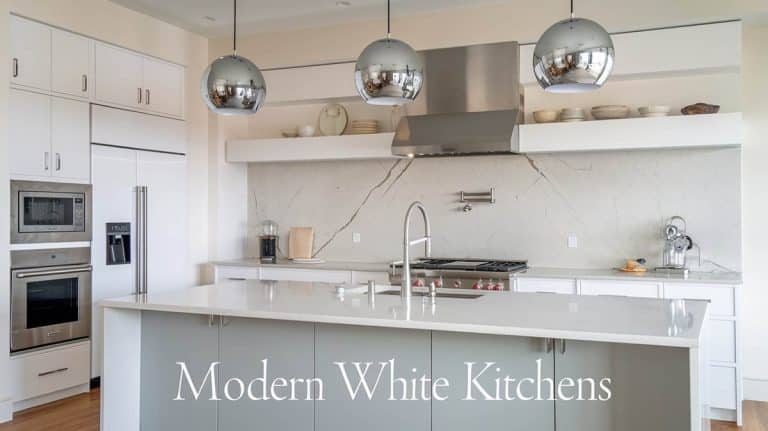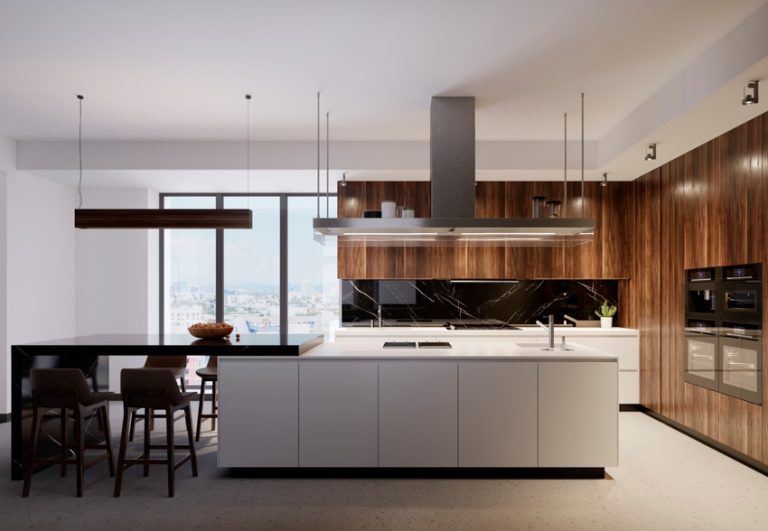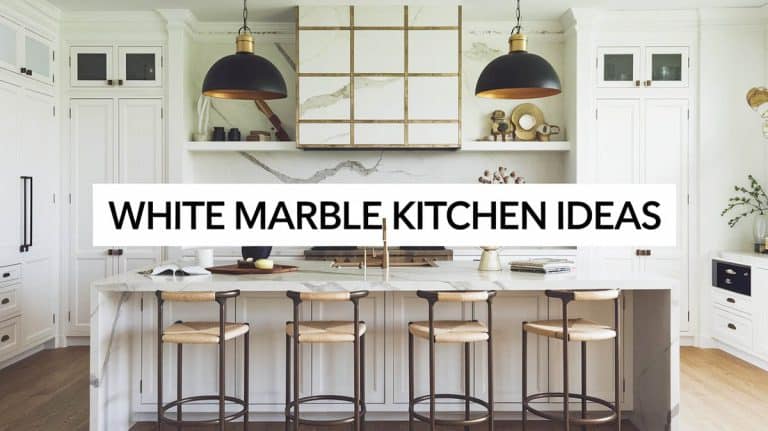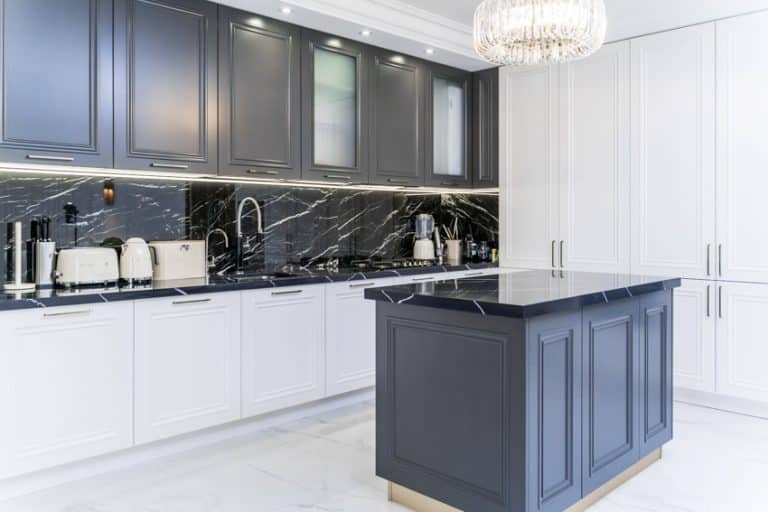How To Create Beautiful Transitional Kitchen Designs
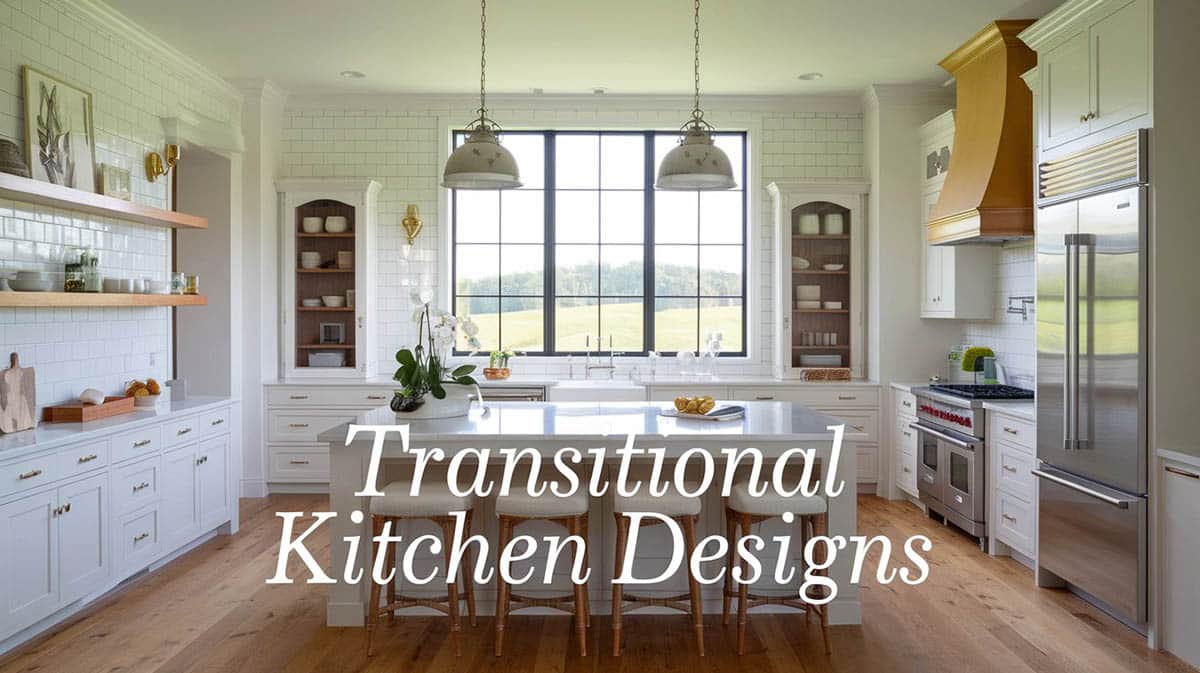
This gallery features beautiful transitional kitchen designs for ideas and inspiration. A transitional kitchen is often demonstrated as a blend between traditional and contemporary designs. One of the great things about transitional kitchens is that they allow the homeowner to unleash their creativity to get the exact kitchen they’ll love, without being confined to a specific style.
Transitional Kitchens
Transitional kitchen designs are all about harmony and balance of styles and materials. Here are some of the best ways designers are combining traditional and contemporary designs to get the transitional kitchen look.
Transitional kitchen cabinets: With a streamlined profile, transitional cabinets are frequently made from wood with paneled style doors and are adorned with modern hardware. To hit the perfect balance, start with a classic Shaker‑style door (it nods to tradition) and finish it in a low‑sheen paint or a wire‑brushed stain that lets the grain peek through (a modern move). Pair full‑overlay doors on perimeter cabinets with inset drawer fronts on the island to introduce quiet visual variety without breaking the clean lines.
Cabinet hardware and finishes: For hardware, mix long tab pulls on drawers with discreet knobs on doors; keep the finishes cohesive—brushed nickel for a cooler palette or soft brass for a warmer one. If you need a dose of lightness, swap a few upper doors for reeded‑glass inserts and finish the interior in the same color as the wall so objects appear to float.
Select one main metal finish and a secondary accent. For example, brushed brass knobs and pulls complemented by a single polished‑nickel bridge faucet. Keep shapes straightforward: finger pulls, T‑bars, or small round knobs. The mix of warm and cool metals mirrors the broader transitional concept.
Backsplash: Tile backsplash is often used in transitional designs to add color and texture to the space. Normally, kitchens of this style have a more neutral color palette. However, many interior designers use backsplash to introduce color and help bring the design together. Mosaic grid style tiles are a popular choice and come in many different colors and textures to get the right look.
A foolproof strategy is to choose one tile format that feels “classic”—say, a 3″×6″ or 4″×4″ —and install it in a layout that feels “current,” like a vertical stack or a double‑herringbone. If you’re working with solid‑colored cabinetry, pick a backsplash with subtle variation—handmade zellige, crackle‑glaze subway, or a honed marble mosaic—so the surface catches light throughout the day. For a bolder moment, run the countertop stone up the wall to chair‑rail height, then cap it with a pencil liner and finish the upper half with paint in the same value as the adjoining room. It keeps sight lines calm while adding richness.
Natural surfaces: Its common to see marble, granite, limestone, quartz and other natural materials used on countertops and flooring. Materials should have clean simple lines, devoid of edge treatments and ornate construction. It’s also not unusual to see countertop materials such as stainless steel and concrete. One of the beauties of this style is its versatility.
Matching materials: When selecting two different countertop materials (for example, quartz perimeter and walnut butcher block island), match the undertones so they appear intentional. If you favor a stone with bold veining, give it a modern square edge and let the pattern be the drama. Large‑format porcelain slabs that mimic natural stone are an excellent choice for a low‑maintenance yet luxe look; choose a matte finish for a softer, furniture‑like presence. On the floor, 8″×48″ porcelain planks laid in a straight pattern read contemporary while referencing traditional wood.
Natural materials combined with manufactured materials: It’s not uncommon to see materials such as wood combined with elements such as stainless steel. One of the hallmarks of this style is the combination of organic and man-made materials. To avoid a patchwork effect, repeat each finish at least twice. If you introduce stainless steel on a hood, echo it in toe‑kick trim or floating shelves. Conversely, anchor warm wood in multiple locations—perhaps the island waterfall panel and a ceiling beam detail.
Bridging elements like matte‑black faucets or bronze light fixtures help visually knit unlike materials together. Keep profiles simple (flat‑bar brackets, square posts) so the eye reads the kitchen as cohesive rather than eclectic.
Decorative ornamentation: Transitional kitchens often have just a touch of decorative ornamentation. Whether it’s millwork on the cabinetry, molding, or decorative flourishes, it’s the little touches that can add extra style and elegance. Think of ornamentation as jewelry: a little sparkle in the right place elevates the entire outfit.
Add a finely detailed furniture toe at the sink base, a slim cove crown that lines up perfectly with adjacent beams, or a gently arched valance beneath floating shelves. Stay away from oversized corbels or heavily fluted columns—slimmer, cleaner profiles bridge both eras better. Finish the look with a single showcase pendant above the island that blends a contemporary silhouette with a traditional material like seeded glass or aged brass.
Lighting layers: Transitional kitchens shine when lighting is layered. Combine recessed LED downlights for general illumination, a pair of statement pendants over the island, and discreet LED tape under cabinets for task and ambient glow. Choose fixtures with classic forms rendered in contemporary finishes—think lantern‑style pendants in matte black or linear glass‑and‑brass bars—to reinforce the style mash‑up.
Color palette & paint: Start with a balanced neutral foundation: warm gray, greige, or soft white on walls and primary cabinetry. Then inject one saturated color in a controlled way—perhaps a deep navy island or forest‑green pantry door. Match the saturation level, not the hue, between contrasting elements to keep the palette harmonious.
Appliance integration: Panel major appliances in the primary cabinet finish to maintain classic lines, but expose a sleek stainless slide‑in range or pro‑style hood for a contemporary edge. Where budget allows, upgrade to induction cooktops and column refrigeration; their flush faces and discreet controls blend seamlessly with transitional millwork.
Seating & social zones: Opt for backless leather‑upholstered stools on slim metal frames at the island—comfortable yet airy. If space allows, add a built‑in banquette with waterfall seat cushions and simple bead‑board backing; it softens the room and ties kitchen to adjoining living areas without skewing overly traditional.
Finishing touches: Style open shelves with a curated mix of vintage crockery and matte‑white modern dinnerware. Use a single oversized piece of framed art—abstract but in a classical gilded frame—to anchor a blank wall. Incorporate a soft vintage‑pattern runner in neutral tones to warm up expansive hardwood or porcelain tile floors.
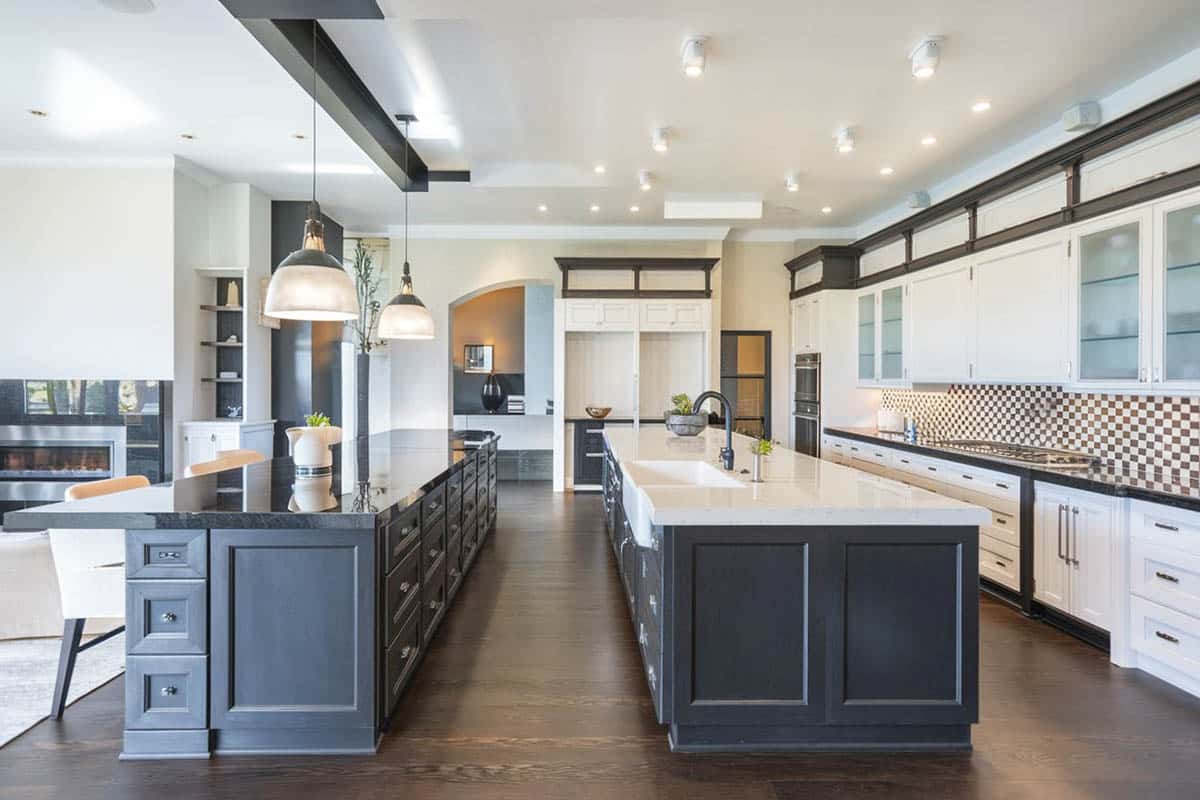
The transitional style kitchen in the photo above pays homage to old and new with its two kitchen island counters. To the left, the first kitchen island’s black wood paneling is topped with Agatha black granite, lit by two traditional profiled brass and glass hanging pendant lamps. The kitchen island has an Arctic white quartz countertop and black metal faucet in a contemporary silhouette at the center. The kitchen backsplash has a retro vibe with its checkerboard pattern and is neutralized with all white paneled cabinets and stainless steel appliances. The feature cupboards are made of wood and frosted glass at the top, adding lightness and a crowning feature to the kitchen.
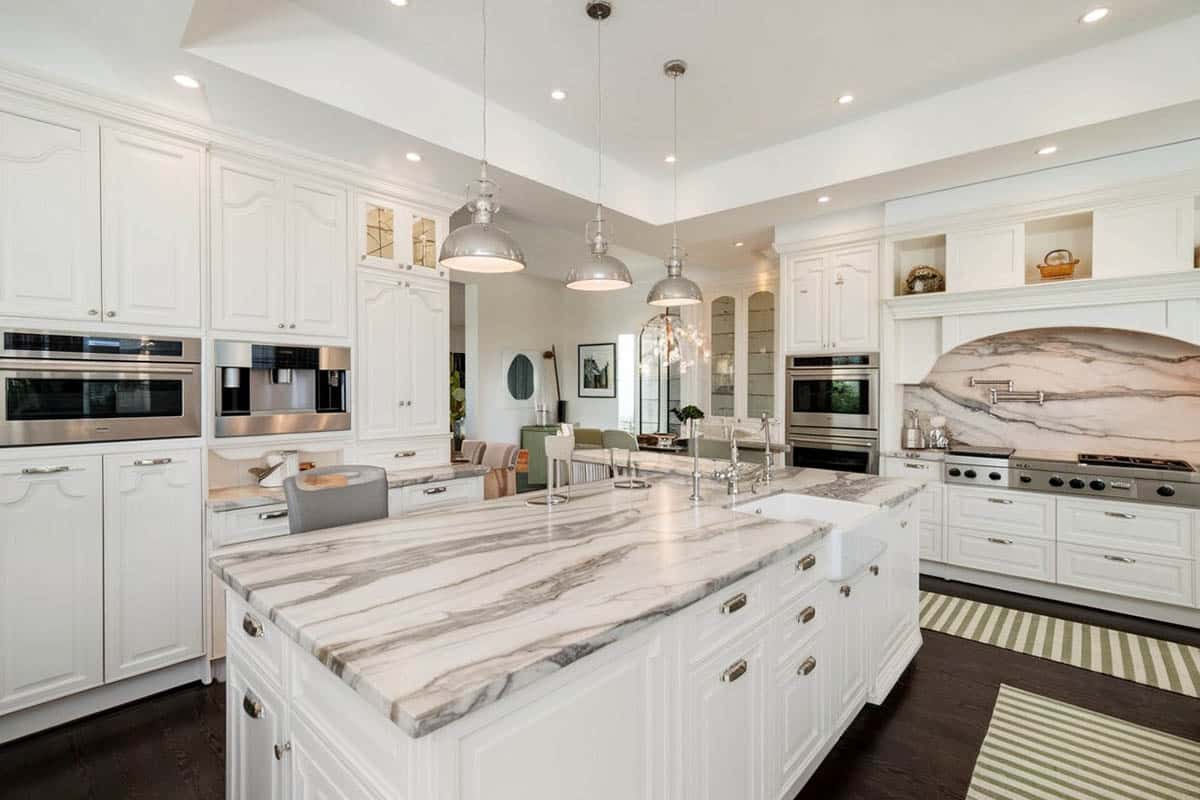
Classic silhouettes of the modern metallic pendant lamps hang over the Calacatta marble counter with white paneled cabinets and black metal cabinet handles. The marble is continued onto the backsplash, as is the white paneling of the cabinets and trims. Pinstriped green and white area rugs highlight the espresso oak hardwood floors, while the white recessed ceiling with downlights add height to this luxurious transitional kitchen.
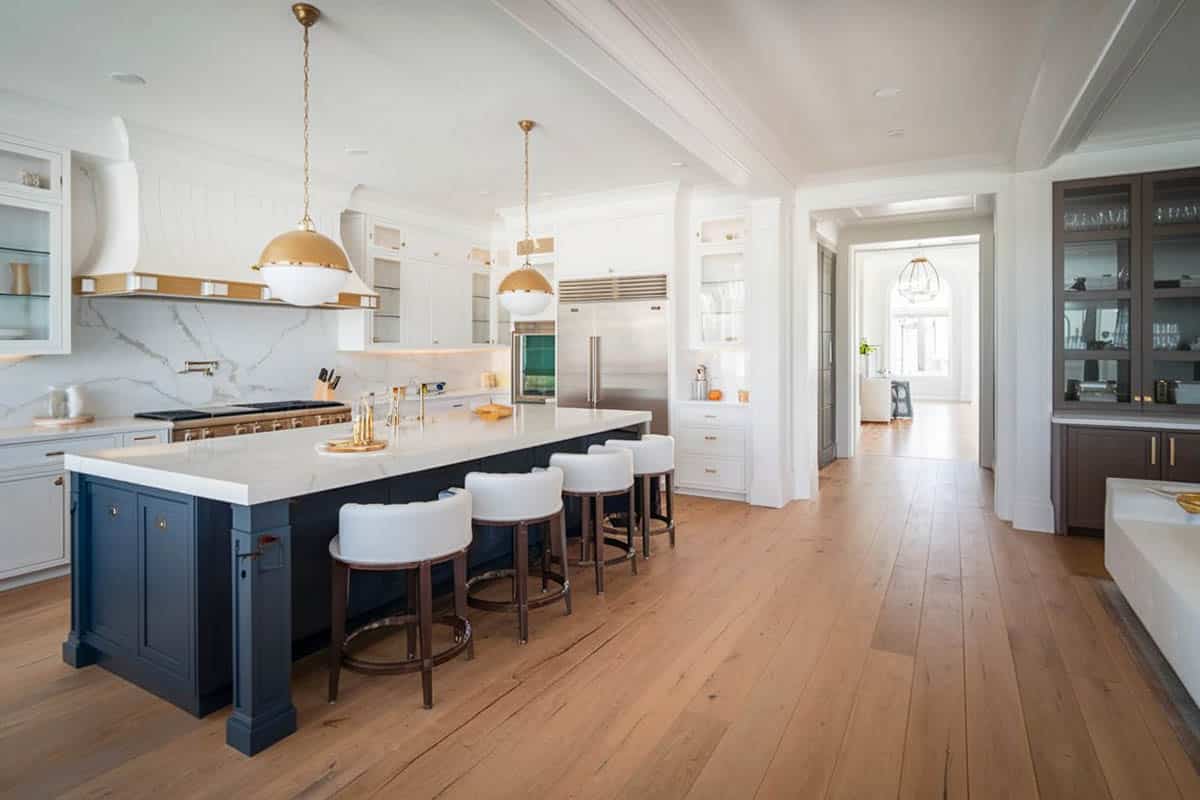
A pair of globular hand-rubbed antique brass pendants hang over the Calacatta marble countertop of the kitchen island in black paneling and plinth. Joining the island are its brass cabinet holders and beige upholstered bar stools. The marble is continued on the kitchen’s backsplash, and the brass finish is continued over the range hood, with a thin band over the build-up. White cabinets and stainless steel appliances bring the modern vibe to this transitional kitchen, while the hickory wood floors tie the whole look together.
Related Kitchen Island Design Galleries You May Like:


